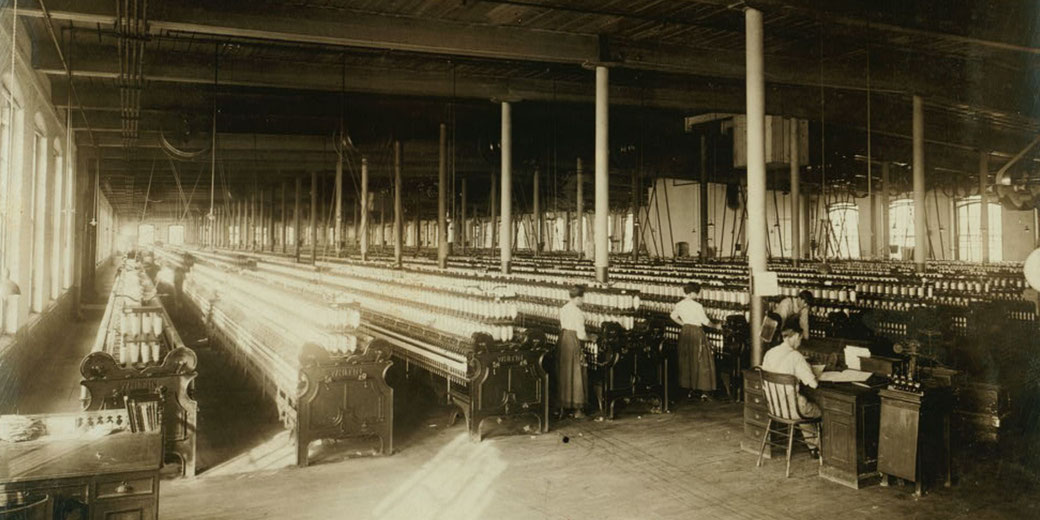Child labour during the Industrial Revolution sources

Source 1
“I am a hurrier. I am fourteen years old and I have been employed ever since I was six. I come to work at seven o’clock, and sometimes leave at four, five or six in the evening in summer, and in the winter near seven.
I live half a mile from the pit. I get my breakfast before I go to the pit and take my dinner with me, which is a dry muffin. I have not time to get my dinner in the pit, but eat it on my way home. I have nothing to drink.
When I get home I sometimes get potatoes and meat. Our workings from the shaft are 500 yards and I have to hurry the corves full that distance and bring them back empty. I have to hurry so many corves a day, depending on orders for coal.
"We have but one girl working with us, by name Ann Ambler. She gets 6/- (30p) a week. She hurries by herself and has to hurry the same weight and distance as I have; there is not a bit of difference between any of us.
I have seen her thrashed many times when she does not please the hewers: they rap her in the face and knock her down. She does not like the work, she does not that. I have seen her cry many times.”
Reference:
Children’s Employment Commission. (1842). The Condition and Treatment of the Children Employed in the Mines and Collieries of the United Kingdom. London: William Strange, pg 30.
Context statement:
William Dyson describes his work in the coal mines in 1842.
Copyright: Public Domain
Source 2
Reference:
Children’s Employment Commission. (1842). The Condition and Treatment of the Children Employed in the Mines and Collieries of the United Kingdom. London: William Strange, n.p.
Context statement:
An illustration provided by the commission’s report in 1842.
Copyright: Public Domain
Source 3
“At the age of six I became a piecer … each piecing requires three or four rubs, over a space of three or four inches; and the continual friction of the hand rubbing the piecing upon the coarse wrapper wears off the skins, and causes the finger to bleed.
The position in which the piecer stands to his work is with the right foot forward, and his right side facing the frame. In this position he continues during the day, with his hands, feet, and eyes constantly in motion … the chief weight of his body rests upon his right knee, which is almost always the first join to give way … my evenings were spent in preparing for the following day – in rubbing my knees, ankles, elbows, and wrists with oil, etc. I went to bed, to cry myself to sleep.”
Reference:
Dodd, W. (1841). A Narrative of the Experience and Sufferings of William Dodd, a Factory Cripple. London: The British Library, n.p.
Context statement:
A description of working in a textile factory from a person who experienced it first-hand.
Copyright: Public Domain
Source 4
"A little girl about seven years old, whose job as a scavenger was to collect incessantly from the factory floor, the flying fragments of the cotton might impede the work... while the hissing machinery passed over her, and when this is skillfully done, and the head, body, and the outstretched limbs carefully glued to the floor, the steady moving, but threatening mass, may pass and repass over the dizzy head and trembling body without touching it. But accidents frequently occur; and many are the flaxen locks, rudely torn infant heads, in the process."
Reference:
Trollope, F. (1840). Life and Adventures of Michael Armstrong, the Factory Boy. London: Henry Colburn, n.p.
Context statement:
An account by an English novelist about the conditions in the factories.
Copyright: Public Domain
What do you need help with?
Download ready-to-use digital learning resources
Copyright © History Skills 2014-2025.
Contact via email
With the exception of links to external sites, some historical sources and extracts from specific publications, all content on this website is copyrighted by History Skills. This content may not be copied, republished or redistributed without written permission from the website creator. Please use the Contact page to obtain relevant permission.






